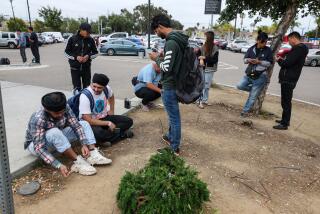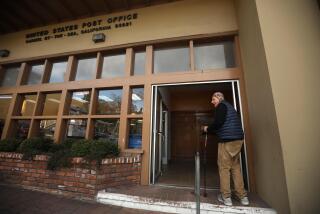State Looking at Strict Phone-Number Rules
- Share via
California regulators are considering applying strict new numbering rules statewide to help conserve phone numbers and slow the need for new area codes.
Under a draft decision to be considered July 20, the state Public Utilities Commission would extend to the rest of the state a series of number-preservation requirements that have been in effect since last year in the West Los Angeles region covered by area code 310.
Phone companies are still fighting the new restrictions in 310 and are opposed to extending them to California’s other 24 area codes. But public sentiment runs strongly in favor of anything that postpones the 16 new codes expected for the state by 2002--even if it means putting new limits on phone companies.
The recently released draft decision, written by a PUC administrative law judge, includes measures that would force phone companies to return for reassignment any blocks of 10,000 phone numbers (an entire prefix) that are not in use within six months of their receipt.
That move would tighten the lax number-utilization guidelines that leave room for carriers to stockpile phone numbers that are not immediately needed.
The decision also would require phone companies to use 75% of the phone numbers in an assigned prefix before seeking a new batch of numbers for the same service area.
In regions where phone numbers are being rationed, the proposed ruling would impose “imminent exhaust criteria,” which would require phone companies that want more numbers to supply phone-numbering officials with documentation and usage data to prove the carrier has complied with number-conservation rules and truly needs more numbers.
A reprieve for 707 and 760: A draft ruling at the PUC would delay the start of the new 369 area code in Napa and Sonoma counties as well as the start of the new 442 area code that would serve the northern San Diego region now using the 760 area code.
The tentative ruling, which is set for a vote by the full PUC on July 20, defers the new codes to review numbering data from those regions in light of new conservation requirements. The communities served by the 707 and 760 area codes were to be split geographically, with some communities getting a new area code.
In the 707 region, the new 369 code was to begin service in December, with the permanent switch set for Sept. 8, 2001. With numbers being rationed in the 707 code, regulators believe the number supply will last until early 2004.
In the 760 area code, the new 442 area code was scheduled for introduction Oct. 21, 2000, with the permanent changeover set for July 21, 2001. Regulators say numbers in 760 now may last 3 1/2 years.
Phone companies are opposed to any delay in the new area codes, arguing that the PUC is overstepping its authority and artificially prolonging the life of the 760 and 707 codes through Draconian number rationing.
No Fans of WorldCom-Sprint Deal: Consumer groups in California and elsewhere applauded this week’s potential death blow to the proposed merger of long-distance giants WorldCom and Sprint, saying that combining the two firms would significantly reduce competition in the long-distance market.
Several nonprofit groups in California were pushing for the merger to be rejected by regulators, including the Greenlining Institute and The Utility Reform Network, both of San Francisco, and the Utility Consumers Action Network of San Diego.
“Bigger is rarely better for telephone consumers,” said Thomas Long, TURN senior telecommunications attorney, after hearing that the Department of Justice had filed a lawsuit to block the mega-deal because of antitrust concerns.
“WorldCom and Sprint, along with the other big long-distance carrier, AT&T;, are already squeezing their low-volume customers with higher rates and minimum charges,” Long said. “This merger would have left customers with even fewer choices for long-distance service.”
*
Elizabeth Douglass can be reached at elizabeth.douglass@latimes.com.
More to Read
Sign up for Essential California
The most important California stories and recommendations in your inbox every morning.
You may occasionally receive promotional content from the Los Angeles Times.













